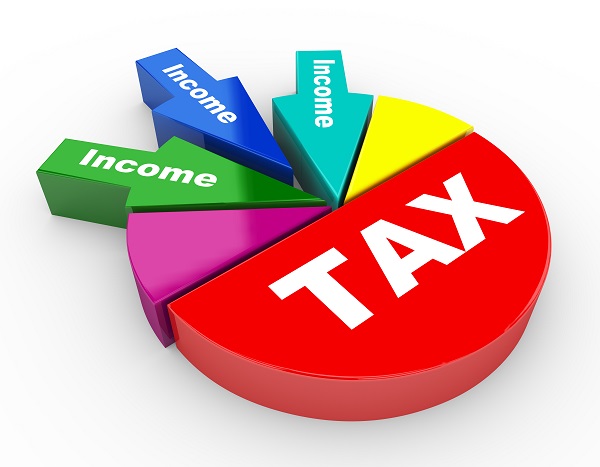What is Section 50C: Taxability Details on Sale of Land and Building

As India’s population is rising at an increased rate, demand for real estate is also surging. This affects the demand-supply curve increasing a seller’s gain over a sale of land and building. The Indian government levies a tax on gains earned by a seller under Section 50C of the Income Tax Act. This Section is applicable at the time of sale of land/building, or both. Learn about it in detail below!
What does Section 50C State?
Capital gains earned by a seller on a sale of land/building or both held as a capital asset are taxable under Section 50C of the Income Tax Act 1961. However, some points need to be kept in mind for proper calculation, like the sale value consideration shall not be more than the stamp duty value decided by authorities.
Also, the Income Tax Department has a set marginal relief of 20%. However, this Section will not be applicable if a seller holds land/building or both as a stock.
What is Capital Gains?
There are five categories in which the Income Tax Department divides a person’s income for tax calculation. One among these five categories is ‘capital gain.’ It includes the income that a person earns upon the sale of capital assets. Note that various assets come under the definition of capital assets, including land and building. While calculating income from capital gains, you have to deduct the acquisition cost from the sale proceeds.
Why was Section 50C Introduced?
Section 50C of the Income Tax Act was introduced to curb tax manipulation practices and bring in better accountability. Under this provision, sellers needed to maintain a valuation limit set by the Stamp Valuation Authority or SVA. Hence, taxpayers have to consider the valuation set by SVA at the time of tax calculation.
Later, the Finance Ministry increased the safe harbour rate for taxpayers from 10% to 20%. It is the variation rate between actual sale consideration value and property stamp duty value as allowed by the government.
Also Read
What is the Applicability of Section 50C?
Here are the conditions related to Section 50C:
- A transfer of land or building must have taken place.
- The land or building should be a capital asset.
- The land/building can be a long term capital asset or a short term capital asset.
What is the Stamp Valuation Authority (SVA)?
Stamp Valuation Authority is an authority that determines stamp duty value. A state government assesses, considers and evaluates it at the time of capital gain calculation. This consideration made at the time of transfer of a capital asset will be used for calculation under Section 50C of the Income Tax Act to determine the total value of consideration.
Note that there can be a difference between the stamp duty valuation and the actual consideration by up to 20%.
How to Calculate Capital Gain Under Section 50C?
Refer to this table to understand how to calculate capital gains under Section 50C:
- Sale value: Rs. 20 lakh
- Stamp duty value (Valuation by SVA): Rs. 20.5 lakh
- Transfer Expenses: Rs. 5,000
| Particular | Amount (Rs.) |
| Full value of consideration (sale value or stamp duty value, whichever is higher) | 20,00,000 |
| Less: Expenses incurred for transfer | 5,000 |
| Net consideration | 19,95,000 |
| Less: Cost of acquisition | Nil |
| Less: Cost of improvement | Nil |
| Capital gain or loss | 19,95,000 |
Consideration
Here we took the sale value as the total value of consideration since authorities allow a variation rate of 20%. As stamp duty value is not more than 120% of the sale value, it can be considered the value of consideration. If the sale value had been Rs. 13 lakh, then stamp duty value would have been its full value of consideration.
What Can Happen if the Selling Price is Less Than the Value SVA Adopts?
The actual selling price of a capital asset can be lower than its value adopted by SVA for many reasons. This is why there are considerations covered under Section 50C of the Income Tax Act, 1961. It would safeguard a seller against fluctuation in a property’s value which is caused due to a significant gap between various stages of transaction of a sale.
So, to remove the hardship experienced by sellers at the time of capital gain calculation, authorities made an amendment to the law under Finance Act 2016. The amendment mentioned that if the agreement date is not the same as the sale registration date, then one must consider the value set by SVA as the contract date. However, a seller must get a part of the sale consideration in cheque, bank draft, or ECS.
What Can Happen If a Seller Refuses to Accept the Value SVA Adopts?
There can be times when a stamp value of a capital asset set by SVA does not depict a fair market value of a land or building. So, a seller may not feel satisfied with this value, given many other factors affect its cost.
At this time, the capital asset purchaser may not feel concerned even though they are the bearer of the tax. It is because it will seem negligible in comparison to their purchase cost. However, it will be a big deal for sellers, affecting their income tax calculation.
So, if a seller chooses not to adopt a stamp duty value set by SVA, he/she may not question the Stamp Valuation Authority for valuation purposes. Instead, since it will affect income tax realisation, one must present the question before the Income Tax Authority.
For determining Fair Market Value (FMV), valuation officers may access the land record and other documents. They will also give a chance to taxpayers to present their point of view, stating how to carry out the valuation.
What if the Value Set by Valuation Officer is Higher Than the Value SVA Adopts?
A valuation officer gets a reference to find out the market value of a capital asset. As a result, any hardship that taxpayers may experience gets eliminated. Any referral made to a valuation officer will not affect the taxpayer in any way.
Let’s understand this with an example:
Suppose SVA sets a valuation of Rs. 13,00,000, while the sale consideration that a seller has set is Rs. 8,50,000. At the same time, the valuation officer’s valuation stands at Rs. 15,00,000. In such a case, its full value of consideration will be equal to Rs. 13,00,000. However, if a valuation officer had set the value at Rs. 10,00,000, then its full value of consideration would have been Rs. 10,00,000.
Final Word
To sum it up, Section 50C of the Income Tax Act was introduced by the Government of India (GOI) to avoid the undervaluation of properties. As a result, GOI was able to realise the correct tax and stopped all malpractices. Follow the above sections carefully to know the applicable tax value, calculation, and other details.
FAQs
Ans: No, at the time of transferring tenancy rights, there is no requirement to follow Section 50C. It is only applicable for the calculation of capital gains when selling land, building, or both. It helps in setting a stamp value duty of properties.
Ans: Section 50C is a provision covering the sale of land or building and is applicable for depreciable assets. This includes assets that an owner is using for more than 180 days and on which authorities allow depreciation of 50%.
Ans: When filing your income tax return, show your purchase or sale of property in Form 26AS. In case the purchase or sale value exceeds an amount of Rs. 30 lakh, then the Income Tax Department will be observant of you.
Ans: If a seller receives or claims sale consideration on the sale of land/building or both, which is lower than the value set by the Stamp Valuation Authority (SVA), it becomes the transaction’s actual sale consideration.
Ans: Section 50C(1) contains an amendment in which authorities added an electronic payment mode in addition to the mentioned mode of payment under Section 50C. In other words, buyers can also pay through an electronic clearing system via a bank account.
Disclaimer
This article is solely for educational purposes. Navi doesn't take any responsibility for the information or claims made in the blog.
Read More on Income Tax Act

What is Form 26QB for TDS? How to Download and Submit it?
While purchasing a property, buyers are liable to pay various taxes. The Finance Act, 2013 made TDS... Read More »PF Withdrawal Rules 2023 – Rules, Documents Required and Types
EPF/PF Withdrawal Employees’ Provident Fund (abbreviated as EPF) is a popular retirement sav... Read More »Stamp Duty and Property Registration Charges in Delhi 2023
It is compulsory for property buyers in the Capital to pay stamp duty in Delhi during property regi... Read More »Income Tax Return – Documents, Forms and How to File ITR Online AY 2023-24
In India, it is mandatory for all taxpayers who earn more than the basic tax exemption limit to fil... Read More »What is Section 80CCD – Deductions for National Pension Scheme and Atal Pension Yojana
The Income Tax Act provides a number of deductions and tax benefits to taxpayers, so they can strat... Read More »Tax on Dividend Income: Sources, Tax Rate and TDS on dividend income
What are Dividends? Companies may raise funds for running their operations by selling equity. Th... Read More »Section 112A of Income Tax Act: Taxation on Long-Term Capital Gains
What is Section 112A? Section 112A of the Income Tax Act was announced in Budget 2018 to replace... Read More »Section 206AB of Income Tax Act: Eligibility And TDS Rate
Section 206AB was introduced in the Finance Bill 2021 as a new provision pertaining to higher deduc... Read More »What is a Credit Note in GST – Example, Format and Steps
A GST Credit Note is mandatory for any GST-registered supplier of goods or services. As a supplier,... Read More »Exemptions and Deductions Under Section 10 of Income Tax Act
What Is Section 10 of the Income Tax Act? Section 10 of the Income Tax Act, 1961 provides tax-sa... Read More »Section 57 of the Income-tax Act – Income from Other Sources
It is quite likely that many entities - individuals as well as businesses - have multiple sources o... Read More »What is Dearness Allowance? – Types, Calculation, and Current Rate
What is Dearness Allowance? Dearness Allowance Meaning - Dearness Allowance (DA) is an allowance... Read More »Top 10 Chit Fund Schemes in India in 2023
Chit funds are one of the most popular return-generating saving schemes in India. It is a financial... Read More »10 Best Gold ETFs in India to Invest in April 2023
Gold ETFs or Gold Exchange Traded Funds are passively managed funds that track the price of physica... Read More »10 Best Demat Accounts in India for Beginners in 2023
Creation of Demat accounts revolutionised the way trades were conducted at the stock exchanges. It... Read More »20 Best Index Funds to Invest in India in April 2023
What is an Index Fund? An index fund is a type of mutual fund or exchange-traded fund (ETF) that... Read More »Best Arbitrage Mutual Funds to Invest in India in April 2023
Arbitrage funds are hybrid mutual fund schemes that aim to make low-risk profits by buying and sell... Read More »10 Best SIP Plans in India to Invest in April 2023
What is SIP? SIP or Systematic Investment Plan is a method of investing a fixed amount in ... Read More »10 Best Corporate Bond Funds in India to Invest in April 2023
Corporate bond funds are debt funds that invest at least 80% of the investment corpus in companies ... Read More »10 Best Bank for Savings Account in India [Highest Interest Rate 2023]
Savings account is a type of financial instrument offered by several banks. It lets you safely depo... Read More »
































